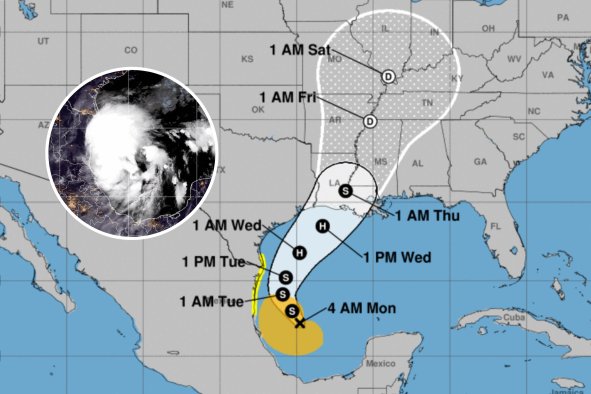Researchers have discovered three previously unknown species that are prehistoric ancestors of the iconic Tasmanian tiger.
The newly described species each roamed Australia around 25-23 million years ago during the Oligocene epoch and represent the oldest "undoubted" members of the thylacinid family ever found, according to a study published in the Journal of Vertebrate Paleontology.
The Tasmanian tiger, which is now extinct, was the only member of the wider thylacinid family to survive into modern times.
Known simply as the thylacine, it was a marsupial mammal native to the Australian mainland, as well as the islands of Tasmania and New Guinea. Appearing around 4 million years ago, the species was the largest living carnivorous marsupial until the time of its extinction.
One of Australia's most iconic species, the thylacine population declined dramatically on the mainland, likely as a result of hunting by humans and competition with the dingo, leading to its disappearance there at least 2,000 years ago, according to the Australian Museum.
The species persisted on the Australian island of Tasmania—located around 150 miles to the south of the mainland—into the 20th century. But numbers declined on the island as well, with persecution by European settlers, who considered it a pest, probably playing a key role, alongside other threats such as dogs.
The last known thylacine died in 1936, but the species was not declared extinct by the International Union for Conservation of Nature until 1982. At the time, international standards dictated that 50 years must pass with no confirmed records of an animal before it could officially be declared extinct.
Over the course of the 20th and 21st centuries, several unconfirmed thylacine sightings have been reported, but none of these has proved to be conclusive.
All three of the newly identified prehistoric thylacinid species were described based on fossils unearthed at the Riversleigh World Heritage Area. The site, located in Queensland state, northeastern Australia, is renowned for its abundance of fossilized remains dating from the late Oligocene to more recent geological periods.
"The once-suggested idea that Australia was dominated by reptilian carnivores during these 25 million-year-long intervals is steadily being dismantled as the fossil record of marsupial carnivores, such as these new thylacinids, increases with each new discovery," study lead author Timothy Churchill, a Ph.D student at the University of New South Wales (UNSW), said in a statement.
"The diversity of mammalian carnivores at Riversleigh during this period rivals that seen in any other ecosystem, including the great mammalian carnivore radiation that developed in South America."
The largest of the newly described thylacinids was Badjcinus timfaulkneri, which weighed somewhere between 15 and 24 pounds. Its robust jawbone indicates that this species had the capacity to consume the bones of its prey, as well as flesh. The study authors report that B. timfaulkneri is the oldest undoubted member of the thylacinid family recorded to date.
The second new thylacinid species, Nimbacinus peterbridgei, was smaller than B. timfaulkneri weighing around 8 pounds—comparable to a small dog. It likely preyed on small mammals and other creatures that shared its environment. It appears to be more closely related to the Tasmanian tiger than other thylacinids of similar age. The authors report that this species is likely the earliest known direct ancestor of the Tasmanian tiger.
The third new species, Ngamalacinus nigelmarveni, weighed approximately 11 pounds—about the size of a red fox. It possessed specialized teeth suited for cutting through meat, indicating a highly carnivorous diet.
"The presence of three distinct lineages of specialised thylacinids during the late Oligocene highlights how quickly they diversified after first appearing in the fossil record," study co-author Michael Archer with UNSW said in the release.
"These thylacinids exhibit very different dental adaptations, suggesting there were several unique carnivorous niches available during this period. All but one of these lineages, the one that led to the modern thylacine, became extinct around 8 million years ago."
Do you have an animal or nature story to share with Newsweek? Do you have a question about palaeontology? Let us know via science@newsweek.com.
References
Churchill, T. J., Archer, M., & Hand, S. J. (2024). Three new thylacinids (Marsupialia, Thylacinidae) from late Oligocene deposits of the Riversleigh World Heritage Area, northwestern Queensland. Journal of Vertebrate Paleontology. https://www.tandfonline.com/doi/abs/10.1080/02724634.2024.2384595
Disclaimer: The copyright of this article belongs to the original author. Reposting this article is solely for the purpose of information dissemination and does not constitute any investment advice. If there is any infringement, please contact us immediately. We will make corrections or deletions as necessary. Thank you.



